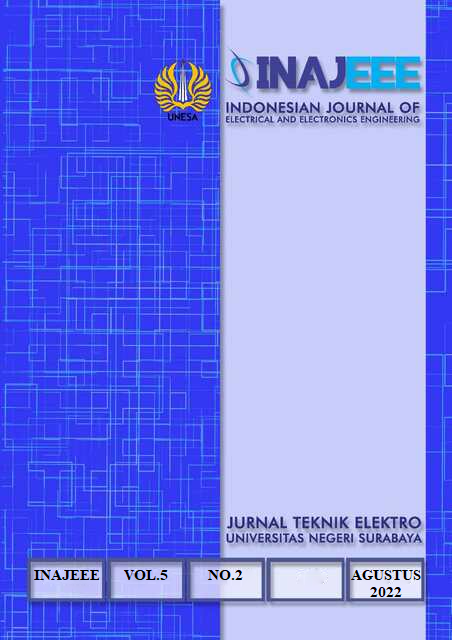Design PLC on Induction Motors Using Star-Delta with Manual and Automatic Technique
DOI:
https://doi.org/10.26740/inajeee.v5n2.p38-45Abstract
In the current industrial era, there are many uses for utilizing AC (Alternating Current) motors which have 2 types, namely synchronous and induction. Where induction motors are often relied on in the industry for now with 3-phase induction motors. With the above problems, this article discusses the solution for instigating Star-Delta motors using automatic and manual techniques that are widely used in industry with PLC media. As for the following component specifications, such as for pushbutton ON two, special specifications are needed where the pushbutton has one NO contact and one NC contact as shown below For the main contactor (KU) requires 1 NC contact with the notation 21-22 and 2 NO contacts with the notation 13-14 and 43-44. Meanwhile, the Delta (Triangle) contactor requires one NO contact (13-14) and one NC contact (21-22). This chapter focuses on explaining the automatic and manual star delta circuits in the cx programmer and cx designer. Manual star-delta in this series the star to delta transfer is manual or you could say the change is using the action of the user. PLC CP1E is a type of PLC that is prioritized by having a low price but is still efficient by having analog input/output and being able to measure temperature. Starting the motor requires a Star-Delta circuit on the Starting Motor current. This starting is useful for reducing surge currents and also torque when starting. The Star-Delta series is equipped with interlock protection designed to overcome the possibility of “Human Error” due to negligence.
Keywords: Control manual, automatic, star-delta circuit
Downloads
Published
Issue
Section
License
Copyright (c) 2022 INAJEEE (Indonesian Journal of Electrical and Electronics Engineering)

This work is licensed under a Creative Commons Attribution-NoDerivatives 4.0 International License.
 Abstract views: 676
,
Abstract views: 676
, PDF Downloads: 1320
PDF Downloads: 1320




